I heard a quote once about the world that stuck in my head. Sadly I can’t remember who said it but the gist was that every place has a name and every place, a story. How true this is….
Cockshut Stream in Sussex is a case in point and I recently created illustrations for a couple of interpretation boards that both tell the tale of this place in different ways. The stream’s survival was previously threatened by neglect but is now in the process of restoration by the Ouse and Adur River Trust, Lewes District Council and the South Downs National Park.
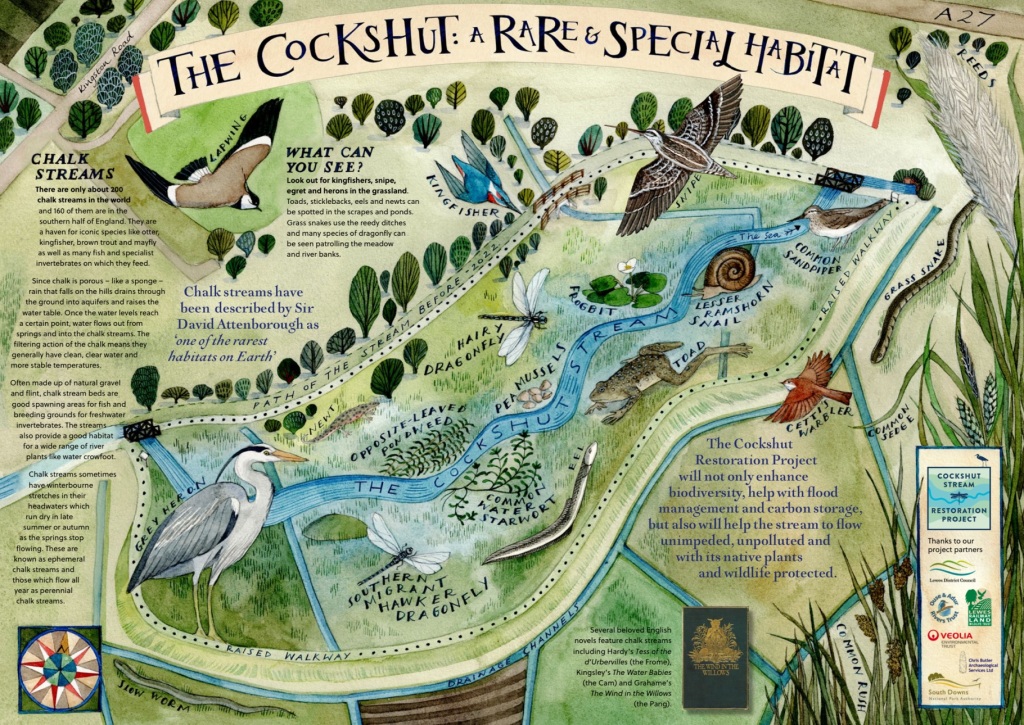
A2 in size.
The first sign bears a map of the stream showing footpaths and roads, banks and bridges, waterways and culverts. The Cockshut is a rare chalk stream (read more about chalk streams here) and a Site of Special Scientific Interest. It floods at rainy times and has a fragile habitat that holds the stories of many creatures, not just the humans who visit it. Egret and herons stalk elegantly through the water-logged grass. Toads and newts find homes between the white-flowered frogbit and water-starwort and a multitude of dragonflies zig zag through the reeds.

The second sign shows a story anchored firmly in the human world with tales of the stream as a working waterway reaching as far back as the Mesolithic period. Cockshut must have gone by another name then and have looked very different – small groups of hunter-gatherers, cloaked in furs against the damp mists, would have wandered the edges of its broad waterlands, using it to look for food in the marshes and reedbeds.
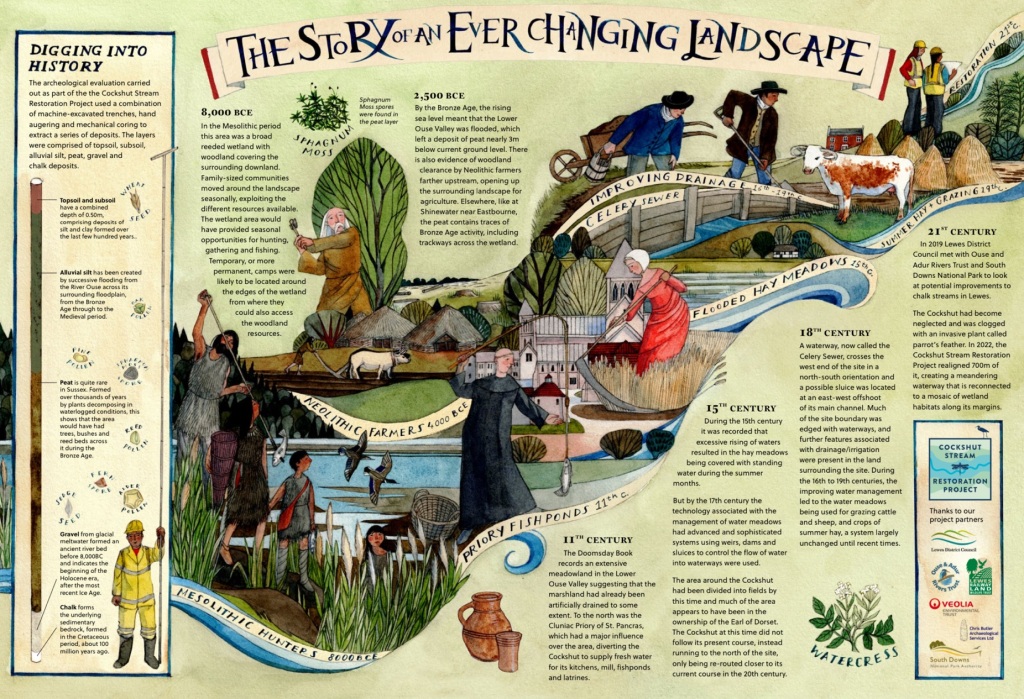
and a the idea of a ‘river of time.’ Watercolour painting. A2 in size.
By the Bronze Age, farmsteads appeared on the overlooking hills and the dense forests were thinned for timber, changing the environment, perhaps forever.
Centuries later the stream was used to transport stone for the building of the Lewes Priory of St Pancras on its banks. The monks, ever efficient, made the Cockshut work cleverly for them, channelling it for drinking water, to run the mill and create ponds for fish to feed a hungry community.
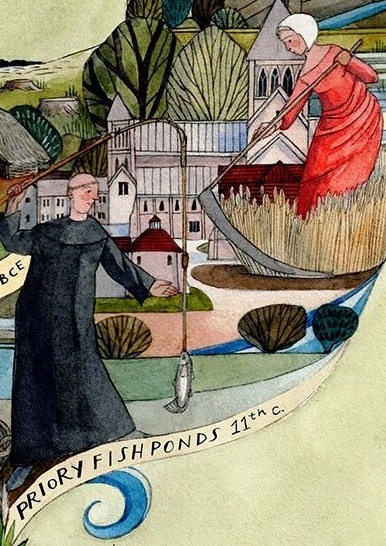
By the 15th century, there was annual flooding of the surrounding meadows but the technical ingenuity of sluices, weirs and dams slowly developed, controlling the rising waters by the 17th century. Over the next few hundred years, livestock would be put out to grass there and Summer hay gathered in.
The last story comes from our present time with the restoration of the stream – another tale of innovation and resourcefulness (which you can read about here).
My set of interpretation boards have been placed on the Cockshut’s newly created banks, now open to visitors. As the man said, ‘every place has a story’ and the signage brings these two sagas together – the stories of human and non-human are entangled with each other and, without doubt, like the stream itself, they are both stories of survival.
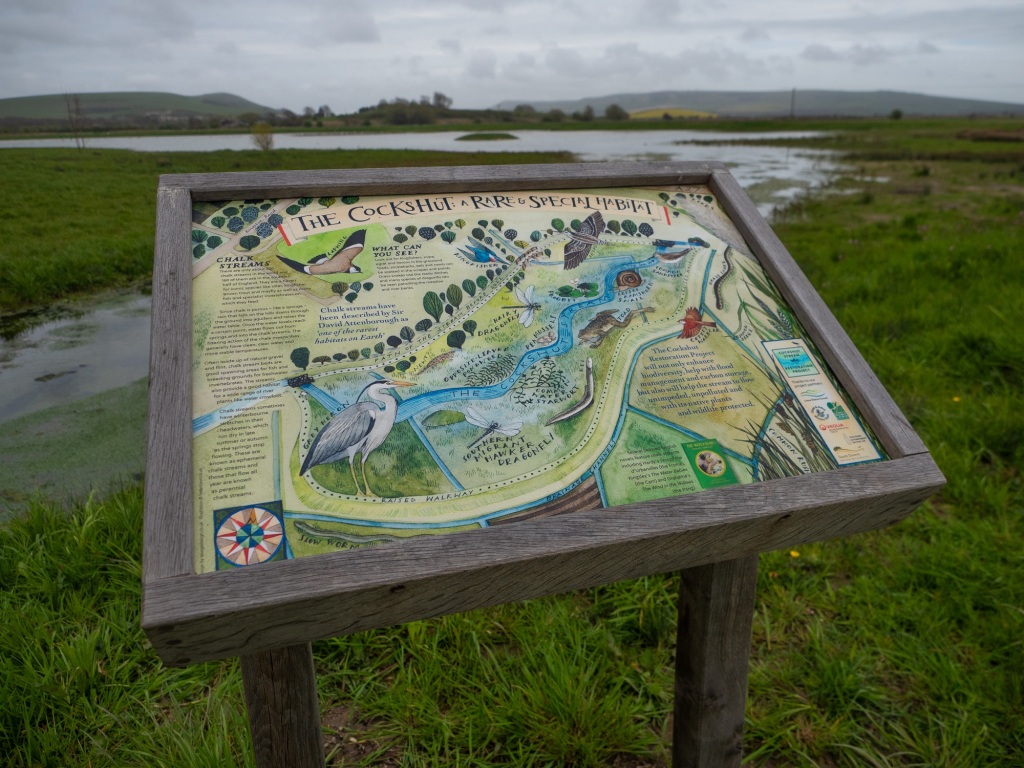
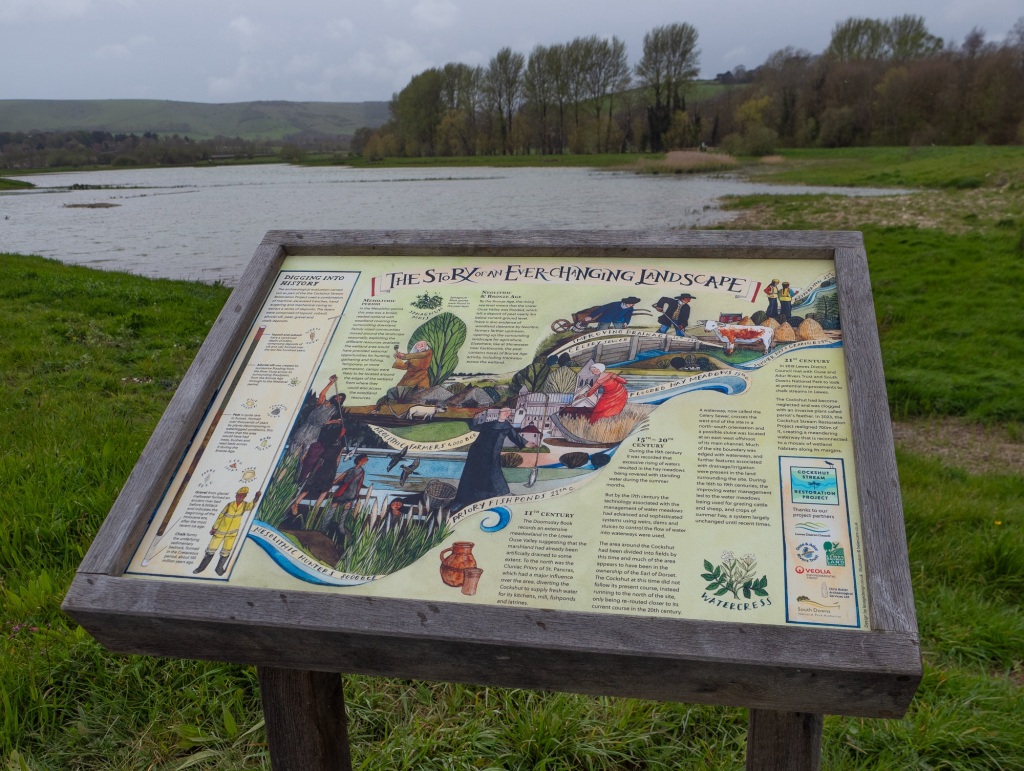
With thanks to Julien Lesage at lesagedesign.co.uk for the beautiful graphic design.
You’ve done the river’s story justice with your stunning illustrations Helen!
Thanks Donna!